Learning how to remove a Presta valve core without a tool can be very useful especially when you need to replace the tubeless sealant, or seat an old tyre onto an old rim.
Riding bikes can require quite a few specialized tools, however, and it is quite easy to get caught out. There are a number of shortcuts and tricks of the trade that can be used in order to get around these situations.
So how do you remove a Presta valve core without the correct tool and how easy is it to do?
Table Of Contents
Most people have a pair of pliers kicking around their home somewhere. This solution is not ideal as it can damage the head of the valve, but if you have nothing else it will do the job. Simply hold the head of the valve with the pliers and twist anti-clockwise to loosen and clockwise to tighten.
Most people that ride bikes should own a chain tool, and if you don’t it might be worth considering one. Simply slot the head of the Presta valve core into the end of the chain tool, and twist anti-clockwise to loosen and clockwise to tighten.
What Is A Presta Valve?The Presta valve is a commonly used valve found on bike inner tubes. The valve is the system by which air is pumped into the tire.
The valve is made up of an inner body and an outer stem.
The Presta valve was invented by the Frenchman Etienne Sclaverand and is also known as the Sclaverand valve or the French valve. The name Presta comes from the Latin word for fast or hurry.
The outer valve of the Presta is narrower in diameter than the other most common valve used on tires – the Schrader valve.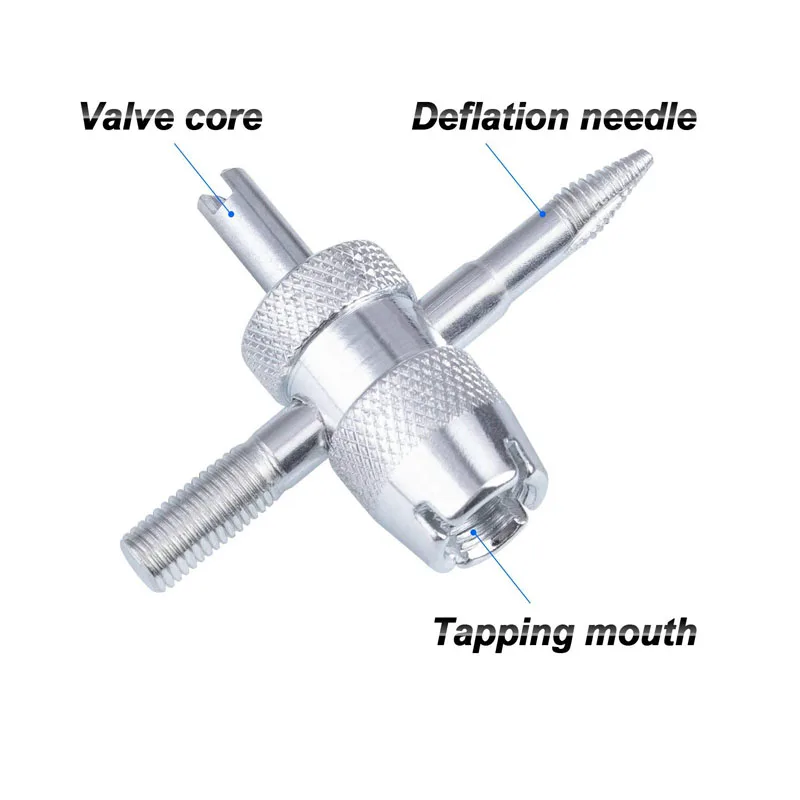 It is 6mm compared with the Schrader valve’s 8mm. The length is variable depending on what they are being used for.
It is 6mm compared with the Schrader valve’s 8mm. The length is variable depending on what they are being used for.
The narrower diameter means that they need smaller holes on the bike rim. This means that they work better with narrow wheels without sacrificing strength. However, the narrower size also means that inner tubes equipped with Presta and Schrader valves are not interchangeable.
Are All Presta Valve Cores Removable?All Schrader valves are removable, but not all Presta valve cores are removable. However most Presta valve cores are removable.
How To Tell If Your Presta Valve Core Is RemovableHave a look at the valve stem. If you see that the valve is made up of two parts then that means it is removable. If the core is removable, that means that it can be used for a tubeless setup. Sealant can be added through the valve.
What Is A Presta Valve Tool?A number of different companies make cheap valve tools that work with both Presta and Schrader valves.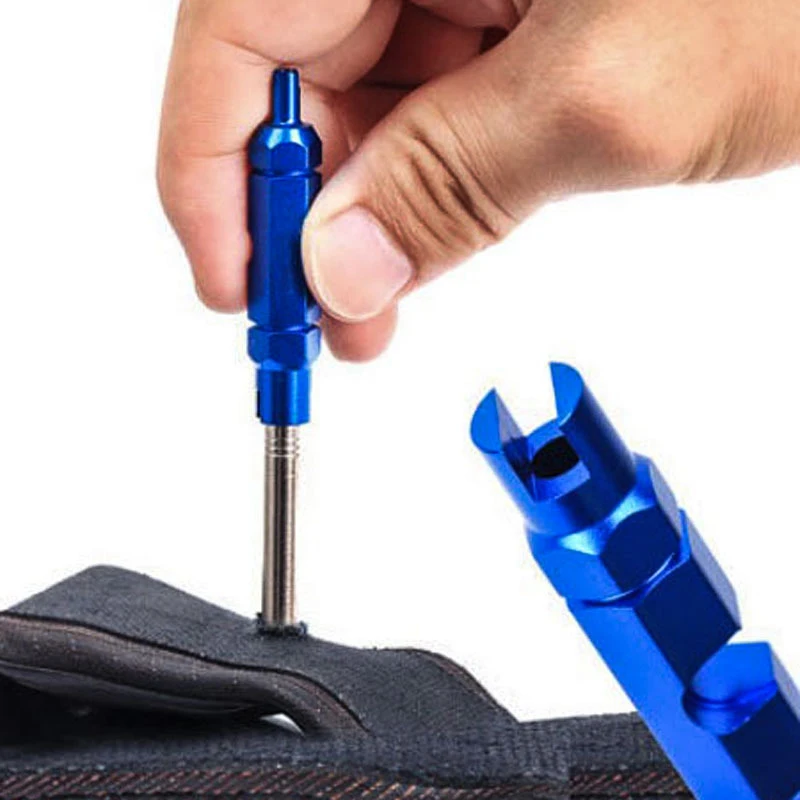 They attach to the valve and allow you to remove the core.
They attach to the valve and allow you to remove the core.
These tools cost about £10. They are easily available and small enough to take with you anywhere.
What Is A Presta Valve Tool?Is Presta Better Than Schrader?There really is no answer about which one of them is better or worse. Both of them have their own advantages and disadvantages. Some people have particular preferences, while other people are more prone to simply use whatever is available.
Schrader valves are more common, and sturdier and their core is much easier to remove.
Presta valves do not have a valve spring, which makes them easier to pump. They are also much better on thinner rims due to their smaller size, which makes them well suited for road bikes.
Presta valves are also lighter, although the benefit of the lower weight is fairly negligible, and they can handle pressure better. They are also better at staying unclogged, which makes them well suited for mountain biking.
Presta valves are fairly robust. As with all things, they can break, but they are not known for being excessively brittle. In fact, if anything, they have a reputation for sturdiness. Just ensure you don’t bend the valve when removing the Presta valve core or it will break!
Can You Put Air Into A Tire That Has A Broken Valve Stem?No, however, It is fairly easy and inexpensive to replace the valve core. Simply remove the broken valve core and screw in a new core, being careful not to strip the thread or damage the rim tape.
Can Presta Valves Be Lengthened?Presta valves can be lengthened if needed using extenders. This might be necessary with deeper rims, such as those on aerodynamic race bikes.
If you are looking to get extenders for your valve, it is worth noting that there are different extenders for valves with removable cores and those without, so make sure that you check which one you need and buy the correct one.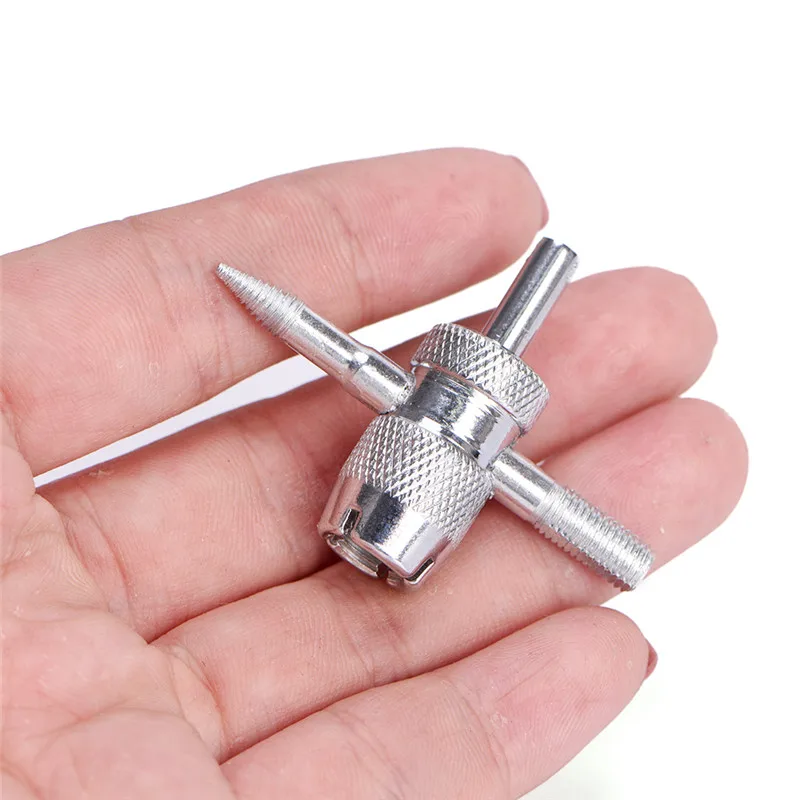
If you find that you need to remove a Presta valve core and you do not have the correct tool to hand then there is no need to worry.
A number of tools that you are likely to have lying around can be used to remove the core.
Pliers, such as needle-nosed pliers, can be used to perform the job. Vice grips will also work. However, the best solution to remove a Presta valve core without the tool is a chain tool or a number 11 spoke key.
If you do not have these to hand, then a little bit of ingenuity with whatever you have to hand can work wonders.
How to Remove a Presta Valve Core and Replace Tubeless Sealant?To start you will need to remove the Presta valve core and then remove the tire. You can see our full tutorial here: How To Fit Tubeless Mountain Bike Tyres | 9 Simple Steps
See our other tutorials here:
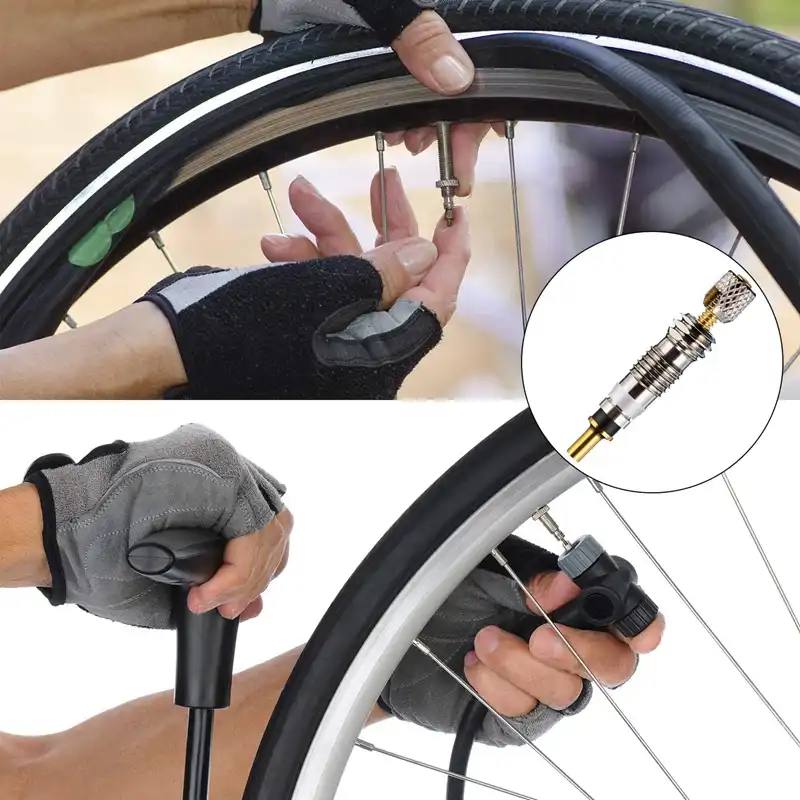
Facing trouble removing the Presta valve core? Don’t know how to do it properly? We’ve come up with a simple technique to get rid of it as it’s a less-discussed problem.
1 How to Spot a Removable Presta Valve?
The lock ring is attached to a broad threaded portion on a Presta valve. The cap screws onto a narrower section with the valve lock nut above it. It’s removable if the narrow component has two flat sides that can be reached with a tool.
|Step 1| Begin with a relevant toolThe first step in removing a Presta valve core is to obtain a tool that will allow you to begin the operation quickly. The Presta valve core is a small element inside the bike’s value core that helps pump up or air out the bike tire more quickly and securely. You can use the Presta core remover tool that came with your bike to remove it. However, if you lose it or your bike does not come with a removal tool, you will need to purchase one from the store.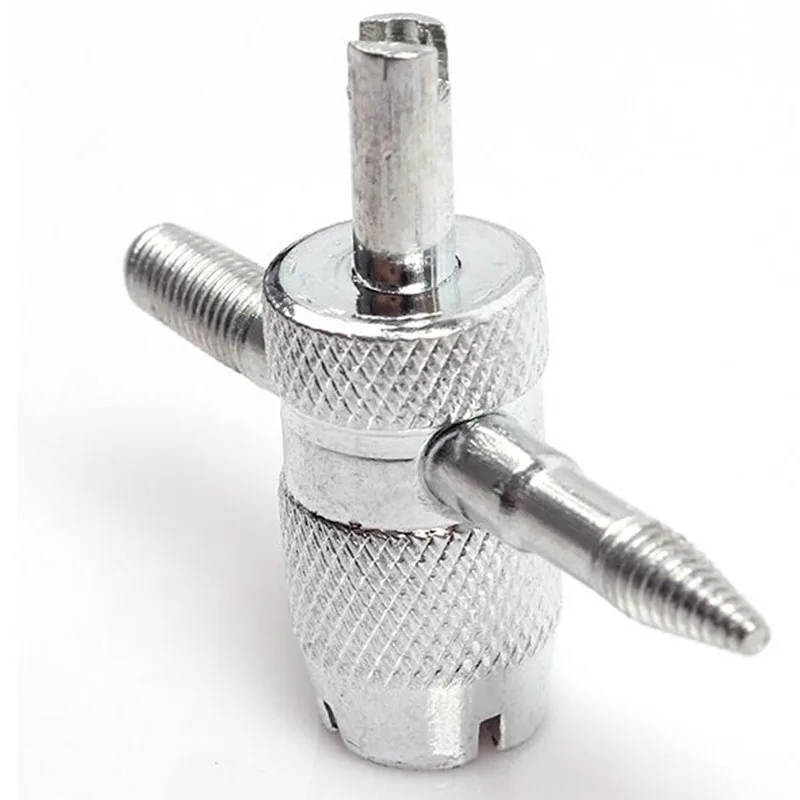 Furthermore, an appropriate instrument can be used to perform the Presta core removal process. To remove the Presta core, for example, you can use a chain tool. However, many people find it difficult to use when removing the Presta core from a bike tire. You’ll need to go to your local store and acquire some pliers and a tiny park tool to get the job done quickly. Make sure you have a nice park tool and pliers that fit the Presta core on your bike. Proceed if you have finished purchasing a tool for the next step.
Furthermore, an appropriate instrument can be used to perform the Presta core removal process. To remove the Presta core, for example, you can use a chain tool. However, many people find it difficult to use when removing the Presta core from a bike tire. You’ll need to go to your local store and acquire some pliers and a tiny park tool to get the job done quickly. Make sure you have a nice park tool and pliers that fit the Presta core on your bike. Proceed if you have finished purchasing a tool for the next step.
After you’ve purchased a proper tool for removing your Presta valve core, you’ll need to air out your bike tire. For a secure approach, several experts recommended removing the Presta valve core after inflating out the bike tire. To easily open the valve when deflating your bike tire, simply rotate the valve core small part in the opposite clockwise or left direction. Then, to air out the bike tire, simply press down on the top area of the valve core.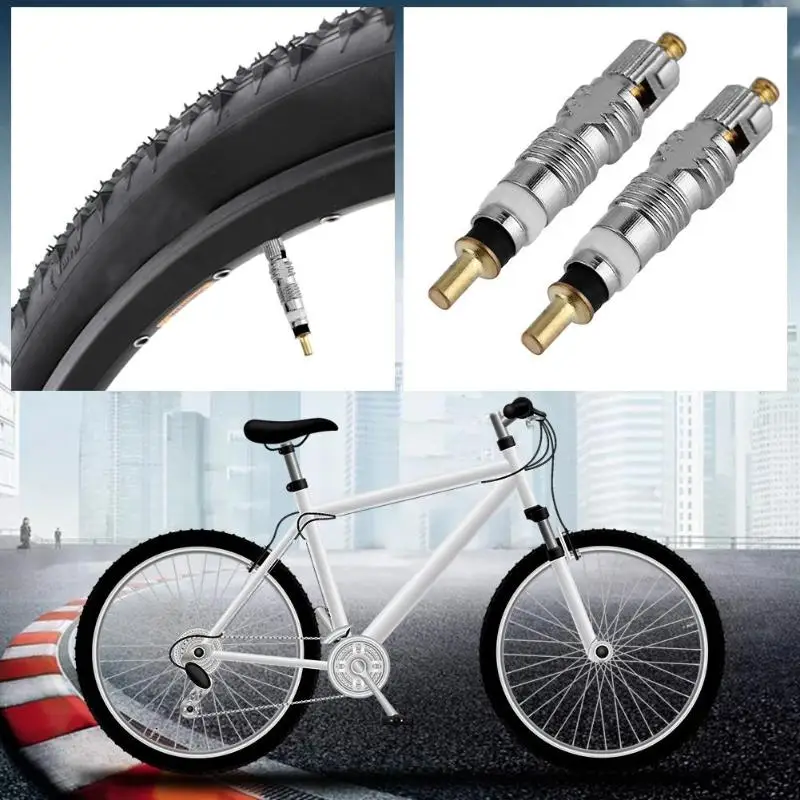 Even though this step appears to be quite straightforward, you should proceed with caution and care. After that, place your thumb in the valve core’s tip and press down for a few seconds to confirm it is airing out. You should keep doing this until you observe the bike tire is fully inflated or deflated. Make sure you’re not applying too much pressure at this stage. If you force the valve down any further, you risk damaging the Presta valve core. When completely airing out the bike tire, make sure to close the valve core tip. To lock the tip, just twist the valve core clockwise or rightward and tighten it using pliers. Proceed to the next step as soon as you notice your bike tire has deflated.
Even though this step appears to be quite straightforward, you should proceed with caution and care. After that, place your thumb in the valve core’s tip and press down for a few seconds to confirm it is airing out. You should keep doing this until you observe the bike tire is fully inflated or deflated. Make sure you’re not applying too much pressure at this stage. If you force the valve down any further, you risk damaging the Presta valve core. When completely airing out the bike tire, make sure to close the valve core tip. To lock the tip, just twist the valve core clockwise or rightward and tighten it using pliers. Proceed to the next step as soon as you notice your bike tire has deflated.
Once the bike tire has been deflated, you may begin the process of removing the Presta valve core. To do so, remove the lock nut from beneath the valve core. It is genuinely visible, and some valve cores do not include it. So, if you don’t notice a circular lock nut on the outside of your entire valve core, move on to the next step.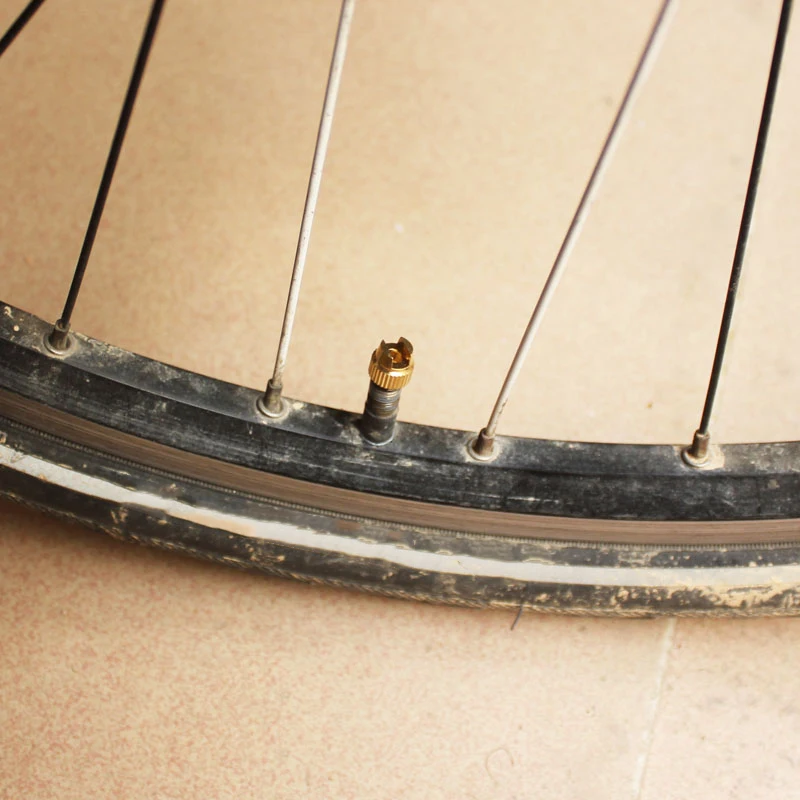 However, if you have a valve core with a spherical lock nut, you should remove it. Simply twist it until the spherical lock nut appears in your hand to remove it. To unlock it, don’t use any pliers or other tools. It’ll be easy to do the task if you just use your hands.
However, if you have a valve core with a spherical lock nut, you should remove it. Simply twist it until the spherical lock nut appears in your hand to remove it. To unlock it, don’t use any pliers or other tools. It’ll be easy to do the task if you just use your hands.
Then you’ll need to insert your park tool into the bike’s valve core. Before using the tool, make sure it has a large and small portion that can easily fit into the valve core. To attach it, you must first arrange the bike tire in a straight posture so that the valve core can be attached. Then, with your right hand, insert the valve into the valve core with your left hand. After that, go on to the next stage as quickly as possible.
|Step 5| Twist the entire valve core
Gently twist the entire valve core now. Twist the core quicker till the Presta valve comes out in your hand once more.
ConclusionThat’s all we have to say regarding the process of elimination.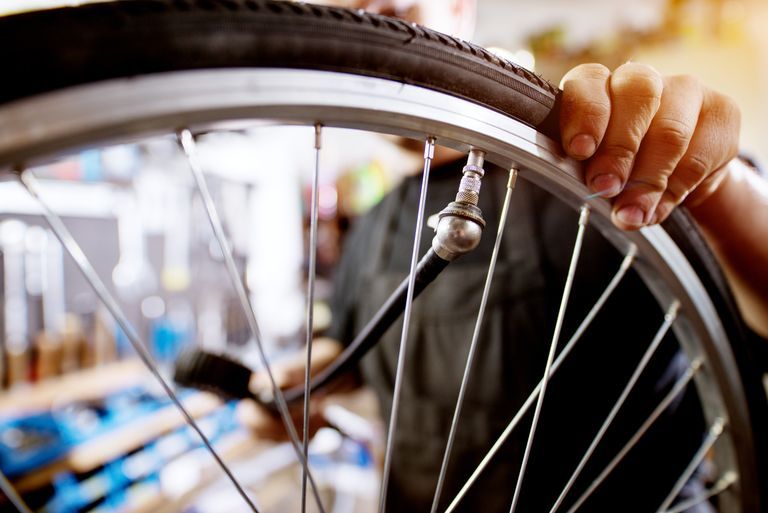 If you don’t want to get trapped while riding, you’ll need to know the proper way and instructions for removing the Presta valve core. It’s something we don’t pay much attention to, but when disaster strikes, we’ll be sorry we didn’t pay more attention. So, set aside some time for this and, if feasible, practice.
If you don’t want to get trapped while riding, you’ll need to know the proper way and instructions for removing the Presta valve core. It’s something we don’t pay much attention to, but when disaster strikes, we’ll be sorry we didn’t pay more attention. So, set aside some time for this and, if feasible, practice.
A Schrader pump should not be used on a Presta valve. If you press the pump pin onto the valve pin, you risk destroying it. The Presta pump head opening is smaller and has an empty center. There are pumps with two independent heads or interchangeable heads.
FAQsQ: How does having a removable valve core benefit me?
A: The valve may be serviced thanks to a replaceable valve core. If the valve fails, just replace the core and continue to use the tire.
Q: Can I use a low-cost generic valve core in my tubeless system?
A: Yes. To go tubeless, you don’t need a complex valve core.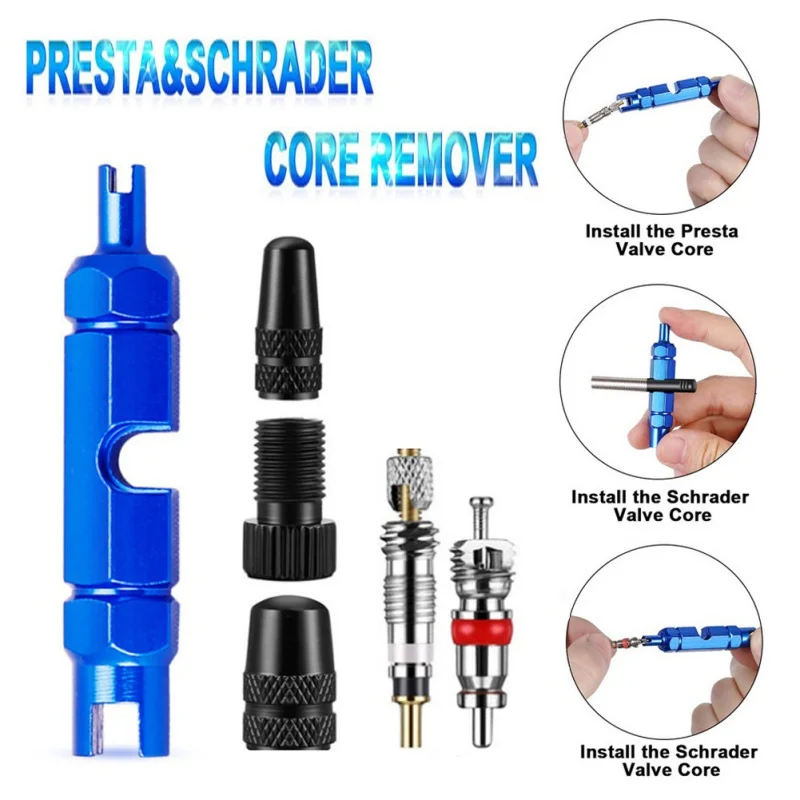
Q: How important is the size of a Presta valve?
A: The diameter of most Presta valves is the same. The length, however, may vary depending on the wheel on which they’re mounted.
Q: Should a Presta valve core be tight?
A: There is no such thing as “valve torque.” Simply tighten the valve core until it is secure.
Q: Why does the core of my Presta valve keep coming out?
A: If the valve core is coming out, the threading is probably worn out or the valve isn’t tight enough.
You can't go far on flat tires - this is an indisputable fact.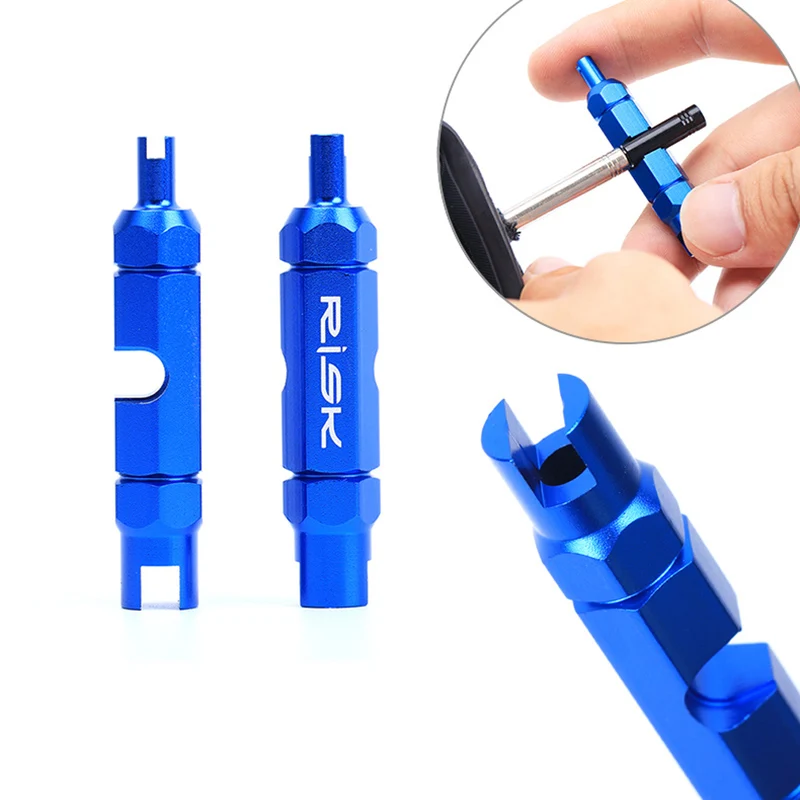 And if a tire puncture can somehow be fixed in the shortest possible time, then a valve malfunction - such a small but important element can significantly change plans. How to unscrew the nipple on a bicycle? What is the goldsmith for? Why is this detail important to pay attention to? We will try to answer these and many other questions today.
And if a tire puncture can somehow be fixed in the shortest possible time, then a valve malfunction - such a small but important element can significantly change plans. How to unscrew the nipple on a bicycle? What is the goldsmith for? Why is this detail important to pay attention to? We will try to answer these and many other questions today.
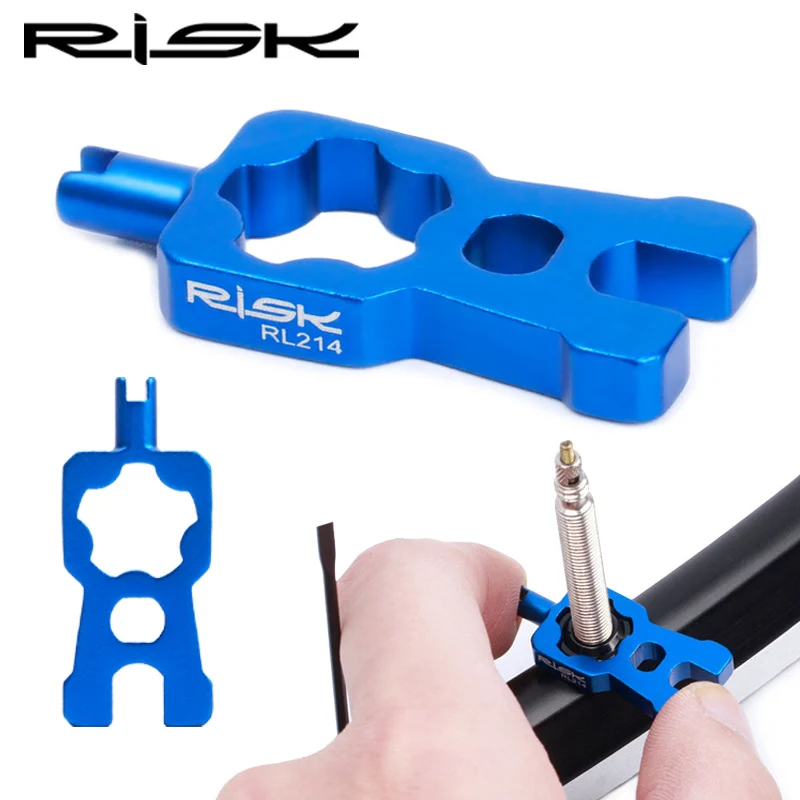
I must say that the above methods do not always allow you to identify a malfunction. In some cases, you will have to remove the camera and examine it in detail. And most likely it would be advisable to replace the nipple on the bicycle wheel.
It may seem to some that this issue does not deserve so much attention. And indeed, if you need to remove Dunlop or Presta, for example, then everything is simple here. Even if the nipple is a little stuck, you can pull it out with ordinary pliers. As for Schrader, here, as life practice shows, not everything is as simple as we would like.
These spools require a special tool, which is a rod with a diameter of 3-4 mm with a small (2-3 mm) cut in the center. It would seem a trifle, but it is this nuance that becomes a significant problem for those who do not know how to unscrew the nipple from the bicycle chamber. Help:
Help:
Still, for avid cyclists, it is better to purchase a special key or build it yourself. It does not take up much space, and its importance in some situations is difficult to overestimate.
The nipple valves are a consumable item, so repairing them is impractical. They don't cost that much, and you can buy them at any store that has at least a minimal range of bicycle parts.
In some situations, minor repairs can be made that can extend the life of the spool:

So, in simple ways, you can cope with the task. But it is worth once again reminding cyclists going on a trip that the necessary set of tools and spare parts should always be at hand.
Anything can happen on the road, and a flat tire can be an annoying nuisance that can ruin all plans. If on the way you notice that the tire began to deflate and the puncture had nothing to do with it, then you can take the following actions:
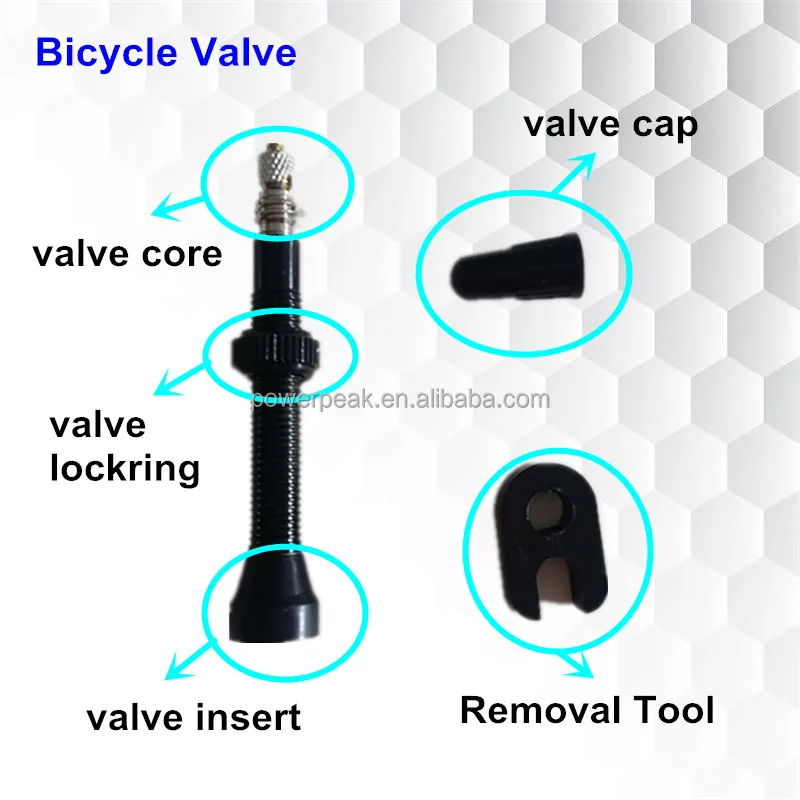
This will help you get to your house or the nearest bike shop. However, remember that high speed and dynamic driving in this case will nullify all efforts.
A broken nipple is not common but not uncommon. A spool failure does not mean that the chamber should be sent to the trash can. You can always buy a new consumable and carefully change the nipple on the wheel. The video will help you visualize the sequence of actions.
Julia Saltrukovich
Author of articles. Seriously fond of bicycles and motorcycles.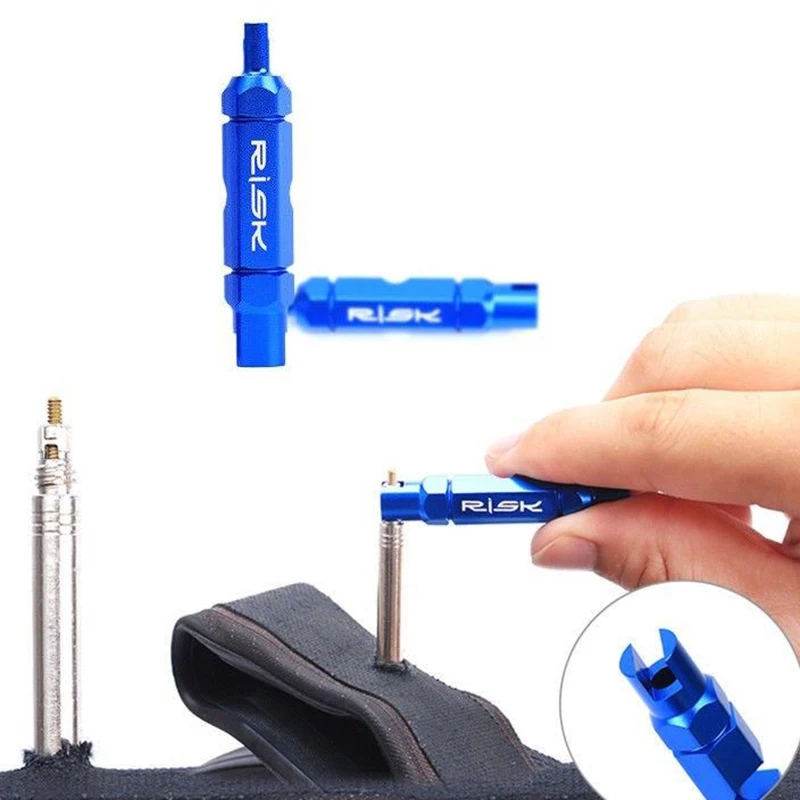 I am interested in everything related to an active lifestyle.
I am interested in everything related to an active lifestyle.
Contents
You can't go far on flat tires. There are cases when, after the next trip the next day, the wheel is significantly or completely flat.
Do not immediately blame the puncture and start beading the wheel to repair the tube. It is most likely that the reason is in the nipple or, as it is also called, in the spool.
A nipple or spool is a device that manipulates the bicycle tire pressure adjustment. Its design is elementary - a special spool (valve), which is placed in a cylindrical tube with or without an internal thread (depending on the type of spool), which is soldered or mechanically attached to the bicycle chamber.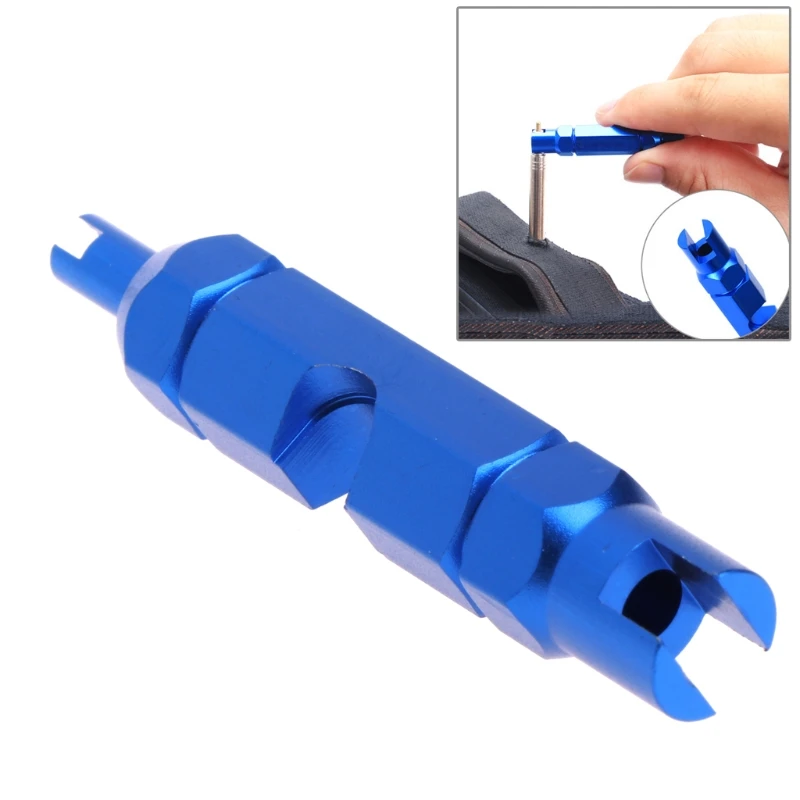
There are three types of nipples:
 The latter is equipped with a metal rod with a spring, at one end of which there is a poppet-shaped valve. To screw in or unscrew the Schrader, you need a special key, which is usually integrated into the protective cap-cap.
The latter is equipped with a metal rod with a spring, at one end of which there is a poppet-shaped valve. To screw in or unscrew the Schrader, you need a special key, which is usually integrated into the protective cap-cap. The serviceability of the nipple is determined by its functional suitability, i.e. the ability to maintain internal pressure in the wheels - if the pressure in the chambers goes down, then repair or replacement of the spool is required.
Causes of a nipple failure can be different, ranging from a breakdown of the valve itself (mechanical damage, natural wear), and ending with elementary contamination.
Tire pressure loss is the main symptom of valve failure.
The following methods will help to identify the problem:
In the absence of the above signs of nipple breakage, you will have to dismantle the camera and further examine it - it is not uncommon for a defect to be found at the base of the nipple attachment to the bicycle camera. In this case, many cyclists advise to replace the camera, but this solution is not for professionals, but everything is in order.
In this case, many cyclists advise to replace the camera, but this solution is not for professionals, but everything is in order.
As it may seem at first, this question is not worth considering. This is true if it is Dunlop or Presta. Unscrewing these nipples is not difficult. Even if they are a little stuck, ordinary pliers will help to unscrew them. But in relation to Schrader, as practice shows, not everything is so simple.
The fact is that in order to unscrew the Schrader spool, you need a special key, which is a rod with a diameter of 3-4 mm with a small (2-3 mm) cut in the center along the rod.
Such wrenches were widespread in the recent past, because they were integrated into the protective cap of the nipple, and were supplied with the cameras. Today, the chambers are equipped with plastic covers, with which the spool cannot be unscrewed.
Such a trifle becomes a real problem for some cyclists - after running around several bike shops, they find that there are no such keys, and in order to unscrew the nipple, they begin to make the tool themselves.
In this case, we can advise the following:
Since nipple spools are consumables, it is impractical to repair the latter. Their cost is low, and you can buy them at any bike or car shop.
But in some cases: in case of contamination or wear of the sealing gum, you can perform simple work to extend the life of the spool.
 e. close tightly. To restore working capacity, you need to unscrew the spool and rinse it well.
e. close tightly. To restore working capacity, you need to unscrew the spool and rinse it well. These simple actions can cope with the task in the long term. But still, you should stock up on the road with the necessary (repair kit, patches, glue, etc.) so as not to get into an unpleasant situation along the way.
If the tire began to noticeably flat on the way, and the puncture was not to blame, you can do the following:
These steps can help you get home on your own. It should be remembered that the speed limit in this situation is recommended to be significantly reduced.